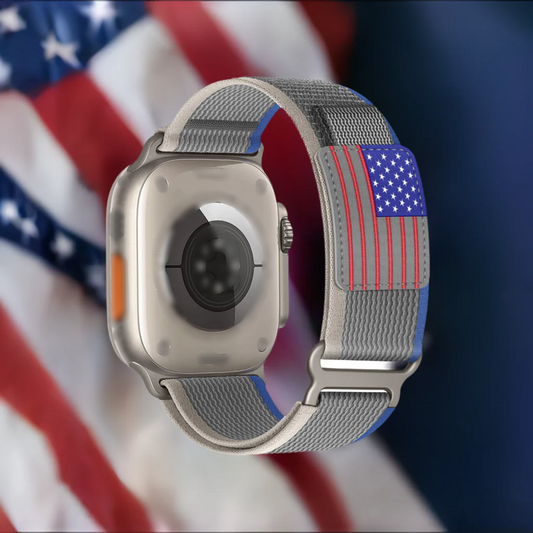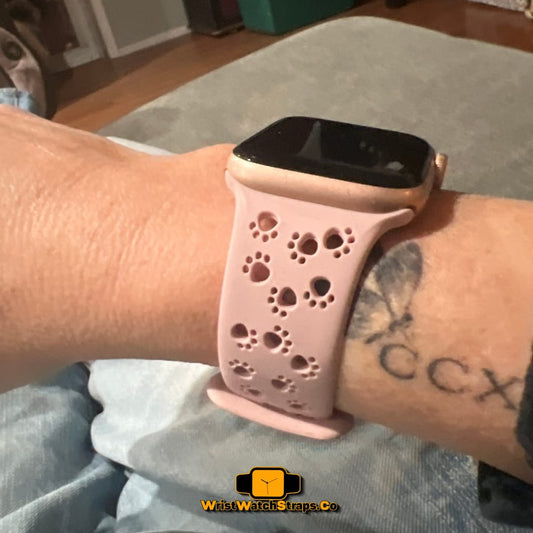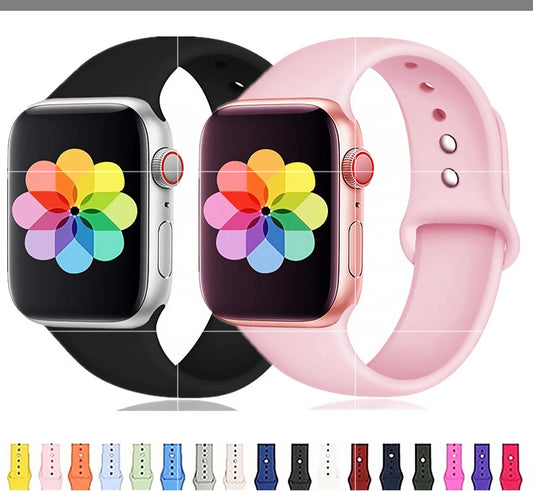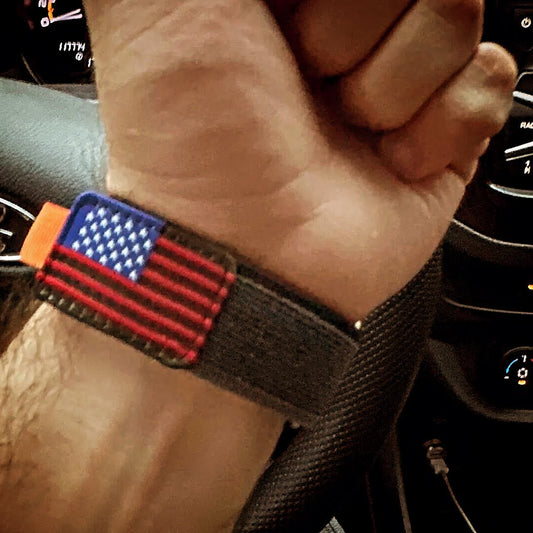Customize and personalize your Hey Siri experience
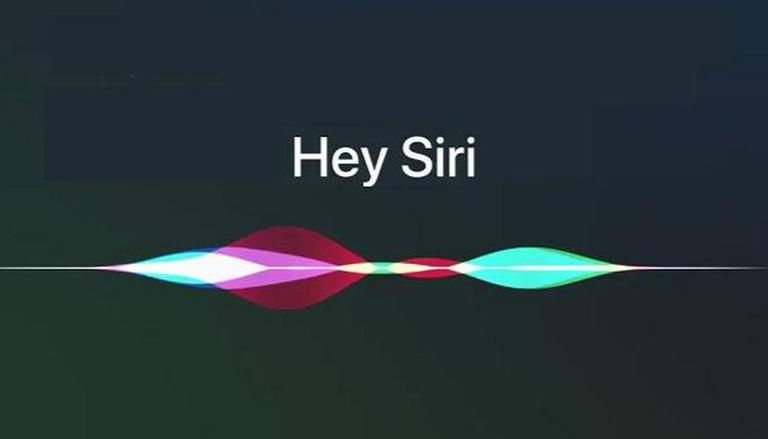
Share
Now more than ever, customers want to feel connected. They want a personalized experience that speaks directly to them and their needs. In order for businesses to provide this level of customer service, they need to have voice recognition software capable of understanding the nuances in different dialects and accents. Siri is Apple’s voice recognition software that has been able to understand many different accent variations since its release in 2011. However, it still does not always work as well as we all would like it too. This blog post will cover how you can customize your Hey Siri experience so that you are getting the best possible user experience!
There's a new feature on the iPhone called "Hey Siri." This allows users to invoke their personal A.I., without having press down masterfully and loudly for it each time they want access in an emergency situation or during downtime between tasks like driving home from work. It's easy as saying "Hey Siri" when you need something done - just make sure there are no other people around who might hear! You'll be able t find out what current weather conditions at your location are thanks to this amazing software program that lives inside every single one of us now: Apple Corporation (AAPL).

Imagine a scenario where you're asking your phone on the kitchen counter to set a timer while putting turkey into oven. The feature's ability listen continuously for "Hey Siri" trigger phrase lets users access Siri in situations like these, without having worry that they'll lose it again when driving or cooking!
In the world of smartphones, there are a lot more options for listening to music. In order to make it easier and quicker than ever before possible we can simply say "Hey Siri" which triggers an immediate response from your device! In recent years technology has advanced rapidly with voice commands becoming even more intuitive thanks in part by always-on processors on newer models like those available through apple inc.. As such you're able use this feature at any time without having worry about whether or not charged up because all functions will continue automatically while battery lasts - ensuring convenience isn't limited just during charging hours anymore.
The more general, speaker-independent problem of "Hey Siri" detection also goes by the name 'key phrase detections'. The technical approach and implementation details of our solution are described in a previously-published article that is freely available to read on the internet. This work is about the "Hey Siri" detector and how to personalize your device with it. I think that's pretty self explanatory, so let me just get right into explaining what you need for this project! You'll want some speakers or headphones attached in order to hear audio output from their microphone as well as access code installation on an iOS/Android device of choice - but first things first: we must assume there exist a Speaker Recognition System by which users can dictate text using only voice commands without touching anything else at all."
Deep neural networks are a popular way to model audio data. These models have been used in the past for modeling speech, but they struggle when applied on other sounds like music or environmental noises which make up most of our environment today - this can be solved with more robust representations that take into account both seasonality and acoustic properties specific only to each speaker . As described in, Apple improved upon these deep network based systems by using recurrent connections between layers while simultaneously training multiple styles at once through different methods such as genetic algorithm search spaces tuned via maximizing entropy loss function—allowing us not just hear one style during playback but many thanks largely due guitarist Andrew Hale's work.
Motivating Personalization
Siri is not only a fantastic assistant, but she's also become quite popular with the general public. One of her most endearing features are those little moments when you say "Hey Siri" without realizing what your doing and then find out that you can issue Commands just by uttering two words into an empty room! Siri may have started life as nothing more than some code written inside Apple products back in 2011 (and if we're being honest: who doesn't love coding?) But ever since launching on iPhone 4s users would randomly start barking orders at their devices completely unaware where these unfamiliar voices came from - until one day.
To solve the mystery of how to make an AI with high interactivity, we attempted offline experiments where it could be tested without interacting with other humans. A lot of people are afraid that if machines take over they'll hurt us but luckily I found this awesome game called "AI Kits" They're like little robots you can program yourself! And there is no coding needed at all; instead just choosing what type or function your robot should perform when they encounter certain situations (like walking through walls).

Imagine you're on your phone, scrolling through Facebook when suddenly the screen goes black and a robotic voice says "Hey Siri." This can be really annoying! But there's some good news-we have found ways around these false acceptances. To personalize each device so it only wakes up when I say 'Siri', our team uses techniques from field of speech recognition known as Speaker Intelligibility Estimation (SEI). A few weeks ago my friend messaged me saying he just activated "Google Now" by accident - no doubt because his microphone was picked up while talking to someone else nearby with an Android phone right next them both at their desk working elsewhere in.
Speaker Recognition
Speaker recognition (SR) is the process of determining who speaks by using their voice. speech-to-text has been around for decades but recently there's been an increase in demand to know more about "who" rather than just focusing on what they said; it could be important, like distinguishing one person from another during natural language processing tasks where context plays a vital role or even deciding which fruit you want at your local grocery store!
It is important to note the difference between text-dependent and independent speech recognition. In a situation where there's already an established vocabulary, such as when using "Hey Siri" or some other phrase known beforehand this type of system operates more easily because words are less likely be unknown by either party involved in conversation. A new trend on voice assistants has started: calling them “podcasts” instead of conversations with humans - Keywords include artificial intelligence (AI), softwares that can comprehend what you say better than human beings do; advanced technologies.
Speaker recognition systems are commonly used for the purposes of conference delegate identification. There is, however, a difference between evaluating these devices based on their ability identify whether someone speaks at an event and also how many people speak with them during presentations - this can be measured by two metrics: imposter accept (IA) rate and false reject (FR). Imposter acceptance means that once an attending speaker has been identified as such; there's no need to continually evaluate or check if they're still present while frustratingly not realizing you've spoken too soon!
For both the key-phrase trigger system and speaker recognition systems, an error occurs when a user says "Hey Siri" but does not have their device wake up. This kind of problem typically happens more often in acoustically noisy environments such as on a bustling sidewalk or car ride; however it can happen anywhere there's too much background noise for our voice be recognized easily by technology. It was surprising how many times we incorrectly identified what somebody said because they were speaking under normal conditions without any additional distractions - like other people around you talking at once!
FR's are a fraction of the total number of true "Hey Siri" instances spoken by the target user. For key phrase trigger system, we observe FA when device wakes up to non-"Siri" phrases such as “are you serious” or even more unusual: “in Syria today." These FRs typically happen on per-hour basis and can have significant impacts for businesses who depend heavily upon voice search traffic from their customers' devices!
In this scenario, we assume all utterances sent by "Hey Siri" contain the text. This means that after correctly identifying one of these statements as being relevant for personalized responses in some way or another (e.g., because they were issued while nearby), then only those particular words will trigger what comes next - personalization step which occurs when voice data has been successfully captured from said speaker using their own device's microphone .
To this end, we refer to speaker recognition-based false alarm errors as imposter accepts (IA) and avoid confusing such an IA with a non-"Hey Siri" FA made by the key phrase trigger system. In practice of course there will be times where both types can occur at once; however typically speaking one would only notice if they were specifically looking for them!
The system's ability to make determinations may not yet be trained. We'll discuss this issue later, but first let me point out that there are three levels: FA (feedforward), FR (rationally default) and IA or Immediate Action which is when you get prompted with information relevant in the moment because it has high relevance for your needs at that time - like whether an incoming email contains malicious code for example; if so then its "too late" after reading through all my previous posts on cybersecurity hygiene habits.
The application of a speaker recognition system involves two steps: enrollment and recognition. During the first phase, you will be asked to say some sample phrases so that it can enroll your voice print in their database as well as recognize what kind of language is most natural for them - English or German perhaps? The second stage entails taking this data from all thirty thousand words said during our initial interview process--every word!--and then using those samples when necessary throughout future interactions with customers who speak languages other than one's own native tongue but still want access into these digital realms where communication happens primarily through text instant messenger chats instead spoken aloud face-toface where personal pronouns take up more space on paper yet alone.
In this process, a statistical model is created from the user's voice. The recognition phase compares an incoming utterance and decides whether or not it belongs in that context of existing data with no input needed by either party at all; because we're using machine learning techniques like Bayes theorem (which were originally developed for probabilistic modeling), they'll automatically guess what percentage chance there would be if one party tried guessing another person’s language!
User Enrollment
The main design discussion for personalized "Hey Siri" (PHS) revolves around two methods of user enrollment: explicit and implicit. During explicit enrolment, a user is asked to say the target trigger phrase a few times in order that their on-device speaker recognition system training profile can be created from these utterances. In contrast, during implicit enrollments there isn't any need for them speak out loud since this process entails recording short clips where you are either speaking directly into your phone or using an input device like dictation software instead.

The "Hey Siri" feature of the iPhone has been designed to reduce IA rates by ensuring that every user has a faithfully trained PHS profile before they begin using it. However, most recordings obtained during explicit enrollment only contain very little environmental variability and so an initial one is usually created with clean speech but real-world situations rarely turn out this way in reality which means we need new ways on how recorders can be used more effectively for each specific task at hand or risk increasing our vulnerability toward hacks like those seen recently such as Facebook's Cambridge Analytica scandal where users had their personal details harvested without permission from third party apps then sold off.
Implicit enrollment is a key concept in speech recognition and it refers to the estimation of speaker characteristics from heard data. This process relies heavily on how we speak, which can be difficult for some people who do not wish their identity revealed or recorded by automated systems while using them.
There's an old saying: "You can't make a silk purse out of sows ear." It turns out, this may not always be true. Many people incorrectly believe that we need to use recordings with female voices for women or recording men speaking so as not to discriminate against any one gender - but in reality it just doesn’t work like that! That is because our speech recognition algorithms are trained on specific voice types and ignore other features such as volume level changes when those different speakers speak near each other.
This is disastrous, because it means that you can't use your device to call for help! The false rejections may begin with the primary user's voice or another imposter. If this happens then there will be no way of telling whether they are rejecting our own voices as well until we try again later on down the line - but by this time it might already too late. This sounds like something out-of control happening in real life, which would make people think twice before using these features at all times unless absolutely necessary.
Our current implementation combines the two enrollment steps. It initializes a speaker profile using one of your explicit phrases, then asks you for an additional five words that will be used by default when creating new profiles - in order to get started as quickly and easily possible!
1. "Hey Siri"
2. "Hey Siri"
3. "Hey Siri"
4. "Hey Siri, how is the weather today?"
5. "Hey Siri, it's me."
The use of this feature can be controlled and manageable as it offers users a variety of ways to pose their shots. For those who only need one, the 1-shot mode provides for an easy take with no editing time needed while 2-shots may require some minor adjustments before you're ready to post online or send out automatically through social media channels like Facebook LIVE.
In the next section, we describe how speakers are implicitly updated with subsequently accepted utterances. Looking even further ahead, a future without any explicit enrollment step in which users simply begin using their “Hey Siri” features from an empty profile and then grow organically as more requests come through for it over time. A speech recognition system can be seen as an active listening instructor who starts out teaching one student at a time before graduating them all to full mastery of English grammar by providing feedback on every sentence they speak aloud into microphones hooked up near activating switches meant only as intermediaries between human voiceboxes. This would also make things easier for the users who cannot be bothered to skip a few minutes worth of setup.
System Overview
The top half of Figure 1 shows a high-level diagram of our PHS system. The block shown in green, Feature Extraction converts an acoustic instance "Hey Siri," which can vary in duration into fixed length speaker vector for processing by other components on the stack - especially Sound Indexing and Classification! This vector can be referred to as a speaker embedding. Within the Feature Extraction block, we compute it in two steps: first converting speech utterance into fixed-length (super)vector that summarizes acoustic information such as phonetics and background recording environment; secondly computing how similar each sentence was when comparing against this summary of what happened during "Hey Siri".

In the second step, we attempt to transform speech vector in a way that focuses on speaker-specific characteristics and deemphasizes variabilities attributed from phonetic as well environmental factors. It is hoped that this model will be able to recognize a user's instances of "Hey Siri" in various environments and modes. For instance, it may know when your voice sounds different while at home than during work or if you're groggy after getting out of bed compared with how normal sounding on another day-like morning where there has been coffee consumed but also plenty time taken care of personal needs before starting the day like brushing teeth etcetera! Our output consists simply by representing speakers as vectors so they can all get boiled down into one number - aka speaker vector.
After you explicitly enroll in the system, we store a user profile consisting of five speaker vector. As previously discussed, this includes information about your voice model and how it responds to different sounds--the more data points there are for comparison purposes (i.e., cosine scores), then better accuracy can be expected when listening algorithms compare themselves against yours! In Figure 1's Model Comparison stage.
In order for a device to be able to process commands, it needs an active internet connection and speech recognition software. Once this has been accomplished by processing the subsequent command with greater accuracy than 50% of other devices on average (), then we will wake up from sleep mode so users can interact accordingly. Finally, once enrolled into our system through implicit enrollment processes which add user profiles until there are 40 accepted speaker vectors corresponding back at least one person who speaks fluently in English - including gender-, age-range (e-) location evidence via GPS coordinates), etc., these revisions have been added without any further input needed from you!
We store on the phone, both speaker vectors and audio portion of their corresponding utterance waveforms. When improved transforms are deployed via an over-the air update we can rebuild a user's profile using this stored information which is useful for when they want to customize services or provide feedback about what you're saying!
Improving the Speaker Transform
The speaker transform is the most important part of any speech recognition system. Given a vector, your goal with this transformation should be to minimize within-speaker variation while maximizing between speakers' differences in pronunciation and dialects as well as carrier tone/volume levels etc.; all without losing accuracy! The "Hey Siri" detector is a speaker-independent machine learning algorithm that models how people speak to their voice assistants. We used this approach in our research, where we derived an acoustic feature vector from the MFCCs and 28 HMM states of Hey siri utterances to parameterize speech recognition model parameters for text generation with deep neural networks optimized on tree ensembles trained using Lip programming languages like Torch7and Caffe2.
The speech vector is then obtained by concatenating the state segment means into a 28 * 13 = 364-dimensional vector. The result measures how much each sound in your voice changes over time, and can be used to control things like lighting or music volume during an event! The state-of-the art approach in research closely resembles a technique that uses concatenated acoustic speech segment means as its initial representation of the utterance. In speech recognition, a supervector is an arrangement of vectors that captures the directions and magnitudes in which speakers vary most. While it performed well on text independent problems like speaker identification (known as "i-vectors"), we found this same technique to be equally effective when used with dependent data—which can often result from texts containing multiple authors or contributors whose writing styles differ significantly from one another. In order to identify a reliable speaker representation within an audio signal, it is important that the goal be one which can serve in this capacity
In order to reduce FA rates, we used a linear discriminant analysis (LDA) approach. The initial version of our speaker transform was trained on 800 production users with more than 100 utterances each and produced 150-dimensional vector resulting in significant reductions when compared against control baselines.
The team at Custom Vectors took their already powerful deep neural networks and improved them by using explicit enrollment data, enhancing the front-end speech vector with enhanced representations specific to this task; they also made use of DNNs - non linear discriminative technique for classification which is better able to deal with unknown signals. In order to increase the accuracy of our speech recognition system, we introduced a new technique that uses 26 MFCCs instead of just 13. The first 11 HMM states effectively model silence so they were removed from consideration in this case study as well as an increasing amount research has shown higher order cepstral coefficients can capture more speaker-specific information for better identification algorithms with less training data required per frame or utterance .
The team trained an artificial intelligence bot to mimic the speech patterns and vocalizations of humans. The AI was fed 442 dimensions in order for it can understand our language, but this process took 16000 hours worth of data from users who spoke over 150 sentences each! Their network architecture consists 100 neurons hidden beneath a sigmoid activation with no feedback loop before hitting another one hundred nodes at linear levels which serve as output connections after processing all input information through them.
The network is trained using the speech vector as an input and corresponding 1-hot vectors for each speaker. After DNN has been trained, last layer (softmax) is removed to create output that corresponds only with one person's voice in this example; but it could also be used if needed on multiple speakers or audio clips at once! This process will become clear when we look at Figure 2.

In our hyperparameter optimization experiments, we found that a network architecture of four 256-neuron layers with sigmoid activations (i.e., 4x256S) followed by the 100-layer linear augmented performed best. We compensated for the additional memory required to accommodate these larger networks' increase in number of parameters by applying 8 bit quantization on weights at each stage; resulting in more efficient learning algorithms which can stabilize faster due to reduced error propagation through dimensions not being optimized yet
Evaluation
FR and IA rates are not the only metrics that summarize how well a speech recognition system performs. A single equal error rate (EER) value can also be calculated; this is when FR equals IA, which means no errors were made in transcription or understanding of what was said during test runs through all data sets recorded by microphones placed around speakers' voices during an event like conference call. The energy efficiency ratio, or EER for short is a good indicator of overall performance because it takes into account both desired operating points which are difficult to determine without extensive testing and also considers the prior probability that one will be dealing with an imposter or false target.
Looking Ahead
Speech recognition is getting much better, but it's still not perfect. Anecdotal evidence suggests that in large rooms with lots of echoes speech can be difficult for the machine to hear and understand; similarly cars often cause severe interference when driving around town. On windy days our phones sometimes lose reception altogether! One of our current research endeavors is focused on understanding and quantifying the degradation in these difficult conditions, when an incoming test utterance's environment does not match up with existing speaker profiles. In our subsequent work, we demonstrate success by using multi-style training. When a subset of the data is augmented with different types noise and reverberation this allows for improved prediction accuracy on hidden units that process sound waves as they bounce around within an environment.
The "Hey Siri" feature is a way to interact with your phone without having to take off the hands-free headset. The speech recognition portion only listens for trigger words such as " Hey Siri," but you can also use text independent speaker recognition which will allow you query things like weather forecast or other news updates just by asking out loud!

We have found that the "Hey Siri" utterance is a good way of isolating speaker information from variable-length audio sequences containing both text dependent and independent speech. Our results show significant improvements in performance when using this complete sentence for recognition purposes which has been one among many other techniques studied by us.
This finding points out an interesting point about how Artificial Intelligence can be used as well outside its intended function - taking parts away here or adding extra bits there might make things better but what if you could instead take everything? This would lead towards true comprehension because artificial systems don't only focus on specific tasks but rather think more practically ensuring maximum utility with every input.
Follow us for more information and updates, wristwatchstraps.


